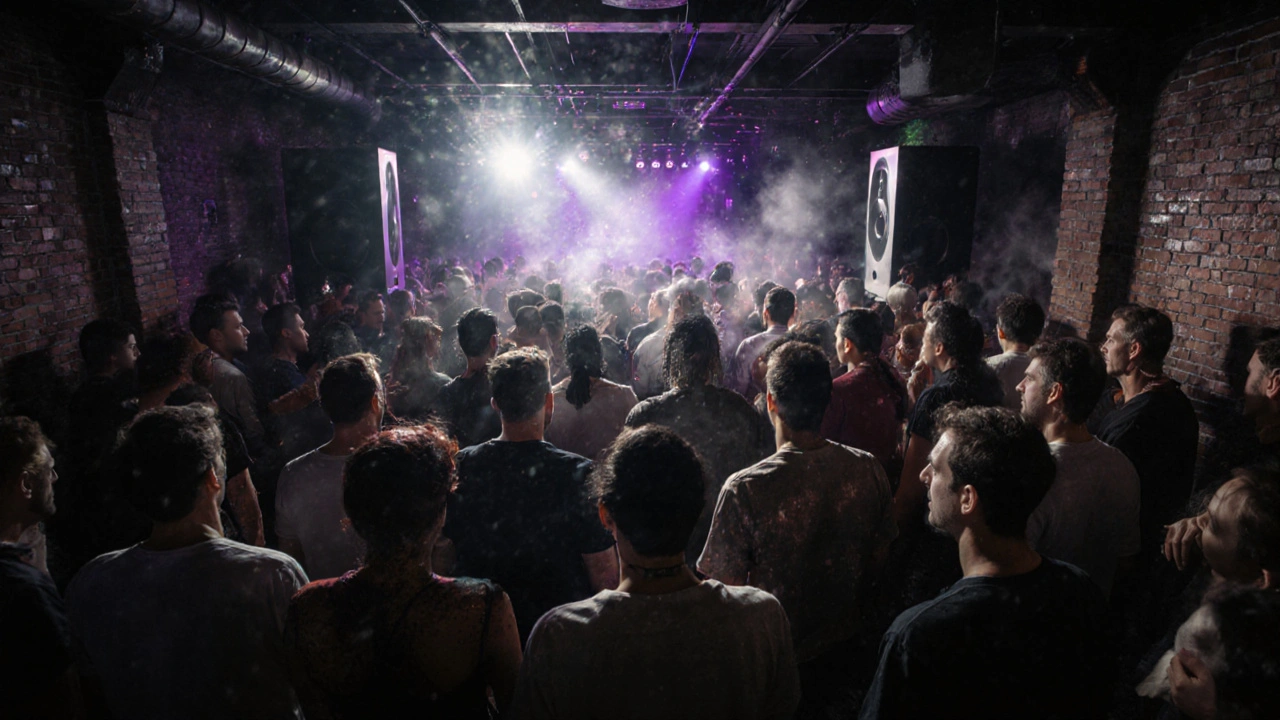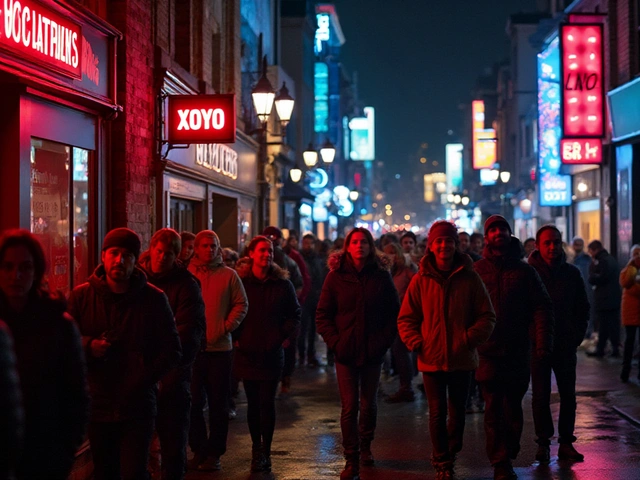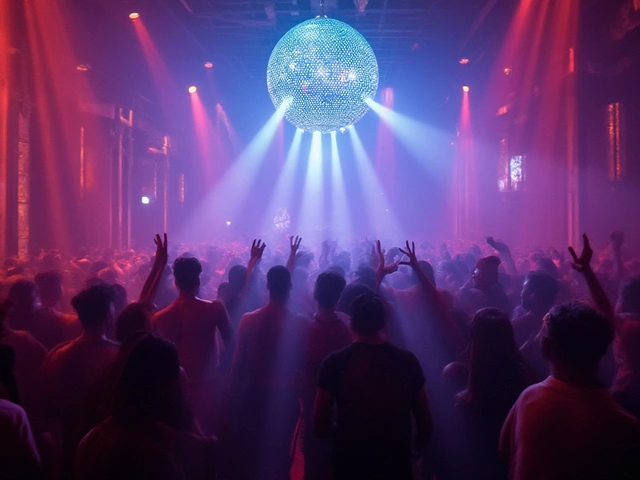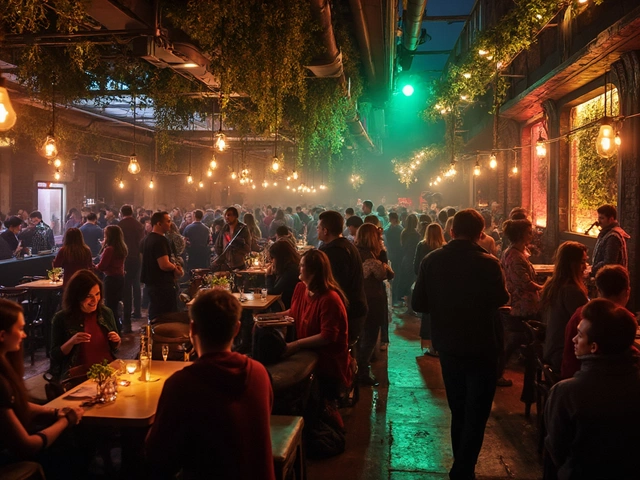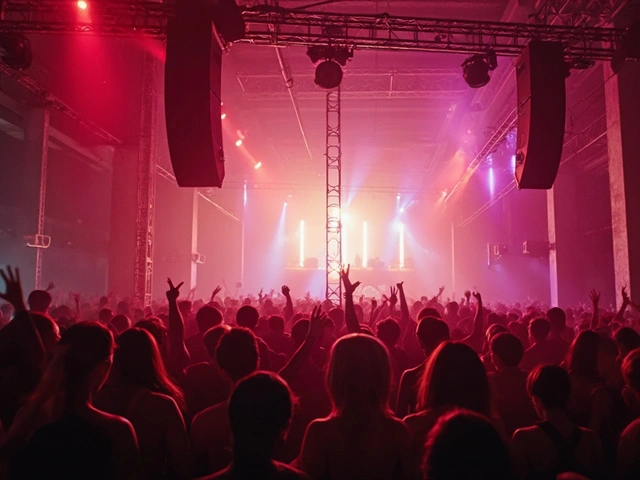In London, the pulse of the city doesn’t slow down when the sun sets-it kicks into overdrive. From the industrial warehouses of East London to the glittering basement bars of Soho, dance clubs in London aren’t just places to drink and dance-they’re cultural engines where music, identity, and movement collide. Whether you’re a local who’s been clubbing since your first student loan, an expat trying to find your tribe, or a tourist wondering why everyone’s still dancing at 3 a.m., London’s club scene has a corner waiting for you.
It’s Not Just About the Music-It’s the Vibe
London’s dance clubs don’t follow one formula. You won’t find a single ‘typical’ club here. In Shoreditch, you might stumble into The Social, where house and techno blast from speakers hidden behind brick walls, and the crowd is a mix of Berlin-trained DJs and Camden art students. Down in Peckham, CRAB (Crazy Rhythms At Brixton) throws monthly parties that feel like a secret family reunion-blackout lights, vinyl-only sets, and a no-phone policy that makes you actually talk to strangers. Meanwhile, in Mayfair, Annabel’s might feel like a private members’ club, but its basement, Club at Annabel’s, turns into a glittering, velvet-draped dancefloor on Friday nights, where investment bankers and indie musicians bump shoulders over gin cocktails.What makes London unique isn’t just the variety-it’s the history. The legacy of warehouse raves in the 90s still echoes in places like Fabric, where the bass from Room 1 can rattle your ribs through three floors. It’s the same spirit that kept underground parties alive during lockdowns, when people turned car parks and disused churches into pop-up dance temples. London doesn’t just host clubs-it protects them.
Where to Go, Based on Your Sound
Not all dance clubs in London play the same tracks. Your night out should match your mood.- Techno & House: Head to Fabric in Farringdon-still the gold standard. Or try The Cross in King’s Cross for a more intimate, no-frills experience. If you want something newer, Mojo in Dalston is where rising UK techno stars test their sets before they blow up.
- Drill, Grime & UK Bass: You can’t talk about London clubbing without mentioning the sound that came from the estates. Wiley’s at The Windmill in Brixton is legendary for raw, unfiltered grime nights. Black Market in Camden runs monthly drill parties that draw crowds from Croydon, Tottenham, and beyond.
- Disco, Funk & Soul: The Jazz Cafe in Camden still throws its iconic Disco Inferno nights every Saturday. It’s not fancy, but the DJ spins only original 7” vinyl, and the dancefloor is packed with people in bell-bottoms and glitter.
- Experimental & Avant-Garde: Printworks (now closed, but its spirit lives on) was the temple of massive sound and light installations. For something similar now, try Coronet Theatre in London’s North West for immersive club nights with live visuals and DJs who treat the room like a canvas.
Pro tip: Check Resident Advisor or London Clubbing on Instagram for last-minute pop-ups. Many of the best nights in London aren’t advertised on Ticketmaster-they’re whispered about on WhatsApp groups or pinned to a noticeboard at a record shop in Brixton.
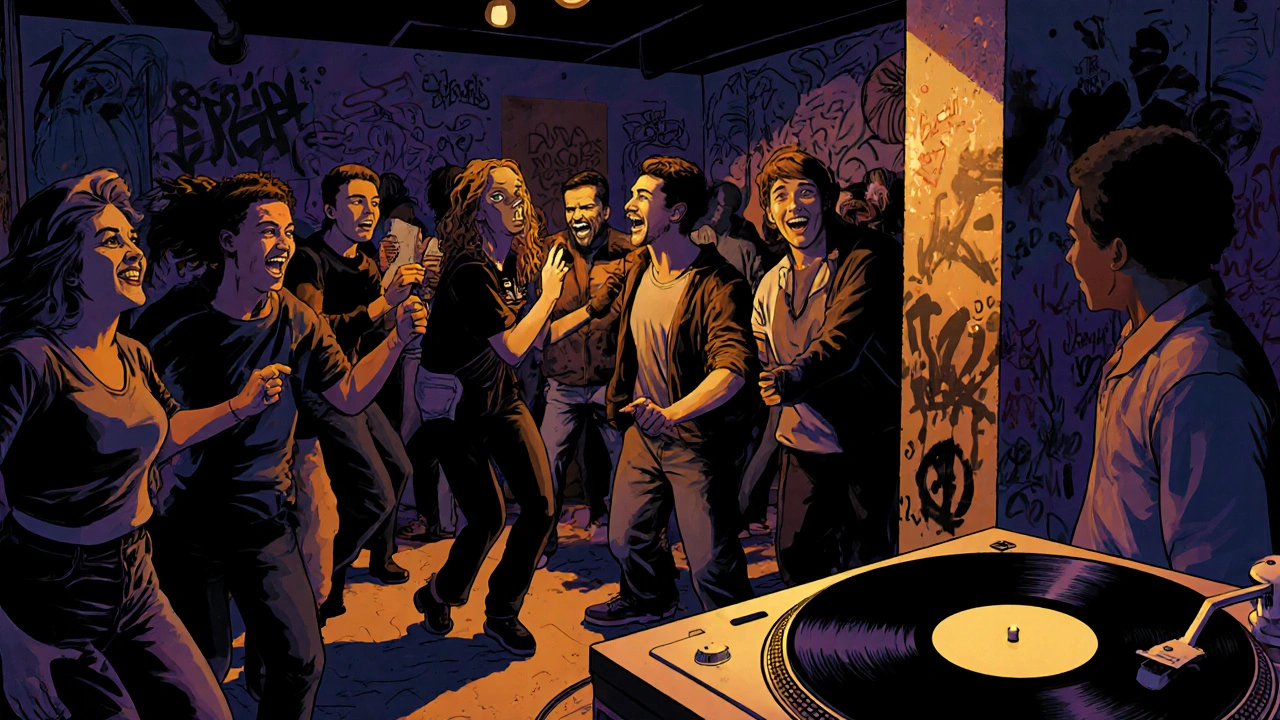
Getting In: The Unwritten Rules
London clubs don’t just want your money-they want your energy. And they’ve got ways to tell if you’re serious.Dress code? It’s loose but not lazy. You won’t get turned away for wearing trainers, but if you show up in a tracksuit and a hoodie from 2018, you might get a raised eyebrow at the door. In Shoreditch, smart-casual works. In Brixton, authenticity matters more than labels. At exclusive venues like The End or KOKO, you might be asked to show ID even if you’re 30-because in London, age isn’t just a number, it’s a filter.
Queue times vary wildly. On a Friday, expect 45 minutes at Fabric. But if you arrive before midnight, you’ll skip the line. Some clubs, like Barbican’s Friday night parties, let you book ahead for guaranteed entry. Others, like Architects in Hackney, operate on a first-come, first-served basis-and the first 50 people in get free drinks.
And yes, you’ll need cash. Many smaller clubs still don’t take cards for bar tabs. Keep £20-£30 on you. And don’t be surprised if the bouncer gives you a nod and says, “You’re cool-go on in.” That’s London. It’s not about looking rich. It’s about looking like you belong.
The Drink Scene: More Than Just Vodka and Red Bull
London’s clubs have moved past the £8 pint and £10 shot era. Cocktails are now part of the experience. At The Box Soho, you’ll find bespoke drinks named after obscure 80s synth tracks. At The Bluebird in Chelsea, the bartenders mix gin cocktails with London-grown botanicals-think elderflower and blackcurrant, not just lime and tonic.For a truly local touch, try a London Essence soda with a splash of gin-available at most premium bars. Or grab a Splice craft beer from a local brewery like Beavertown or Partizan, both of which have taprooms attached to clubs in Peckham and Brixton.
And if you’re not drinking? No problem. Non-alcoholic cocktails are now standard. Booze Free in Dalston serves up drinks made with koji, kombucha, and fermented herbs. You won’t feel left out-you’ll feel ahead of the curve.

When It All Ends: Getting Home Safely
London’s clubs don’t close at 2 a.m. Like the city itself, they run on their own rhythm. Most stay open until 3 a.m., some until 4. But the Tube stops running around 1 a.m. on weekends.That means your ride home matters. Uber is reliable but expensive after midnight. Bolt often has lower surge pricing. For a cheaper option, the Night Tube runs on Friday and Saturday nights on the Victoria, Central, Jubilee, Northern, and Piccadilly lines-just don’t expect it to be empty. You’ll share the carriage with people who’ve been dancing since 10 p.m. and are now half-asleep, still holding their shoes.
For the safest bet, group up. London’s nightlife is communal. If you’re alone, find someone who’s leaving at the same time. The city’s got a quiet code: you look out for each other.
Why London’s Dance Clubs Still Matter
In a world where streaming algorithms decide what you listen to, and TikTok trends dictate what’s cool, London’s dance clubs are one of the last places where music is still discovered live, felt in the body, and shared with strangers who become friends by sunrise.They’re where a 17-year-old from Croydon hears a bassline that changes their life. Where a retired teacher from Islington finds joy in salsa nights. Where a Nigerian expat in Peckham dances to afrobeats with a crowd that sings every word.
This isn’t just partying. It’s belonging.
What’s the best night to go clubbing in London?
Friday and Saturday are the big nights, but Thursday is where the real insiders go. Many clubs host their most experimental or underground parties on Thursdays-think live sets, new DJs, and fewer crowds. Fabric’s Thursday nights are legendary, and places like The Jazz Cafe and The Windmill often have better vibes and cheaper drinks midweek.
Are London clubs expensive?
It depends. Entry at big venues like KOKO or Printworks can cost £15-£25. But many smaller clubs, especially in East and South London, charge £5-£10 or even nothing at all for early entry. Drinks range from £6 for a pint at a local bar to £14 for a cocktail. The key is timing-arrive early, skip the bottle service, and stick to house drinks. Many clubs offer free entry for women on certain nights, so always check their socials.
Is it safe to go clubbing alone in London?
Yes, if you’re smart. London is generally safe for solo clubbers, especially in well-lit, popular areas like Shoreditch, Soho, and Brixton. Avoid isolated streets after 2 a.m., keep your phone charged, and let someone know where you are. Many clubs have safety stewards and quiet rooms if you feel uncomfortable. Trust your gut-if something feels off, leave. You’re not rude for leaving early.
What’s the most underrated dance club in London?
Architects in Hackney. It’s small, unassuming, and rarely on tourist lists. But it’s where the best underground techno and bass music happens on weekends. The sound system is built by local engineers, the lighting is minimal, and the crowd is made up of people who’ve been coming for years. You won’t see influencers here-just people who love the music.
Do I need to book tickets in advance?
For big-name DJs or special events (like a Boiler Room takeover or a live set from a famous producer), yes. But for regular club nights, especially midweek or at smaller venues, you can usually just show up. Always check the club’s Instagram or website-many now use Eventbrite or TicketSource for free events, and those often sell out fast.

